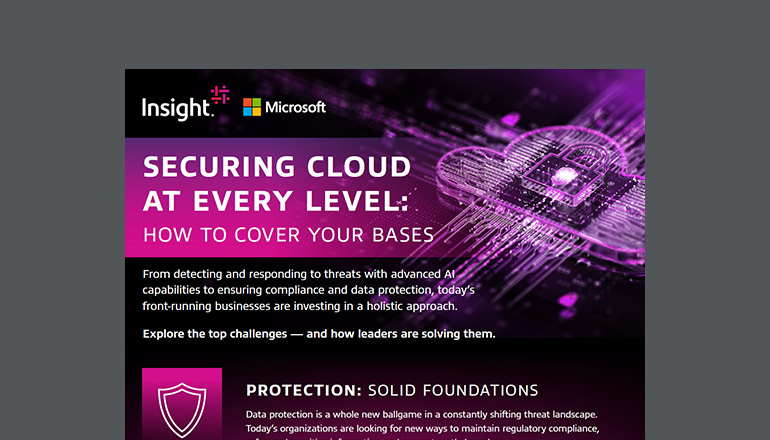Article Best practices to boost performance efficiency with VMware Cloud®





By Insight UK / 11 Oct 2021 / Topics: Cloud
As most organisations are adopting remote working solutions at unprecedented scales and hybrid cloud is gaining popularity, IT environments become more complex than ever. To make sure that this complexity does not lead to inefficient setups that may result in unnecessary spend, Managed Service Providers (MSPs) need to support their clients with efficient solutions and services. In this blog, we focus on some best practices for VMware Cloud®.
Over the past years, many companies have embarked on a cloud transformation journey. Cloud environments offer great opportunities to future-proof your business. Organisations also know they need to develop new resources if they want to stay ahead of the competition. The flip side of this evolution can be seen in IT environments that become increasingly complex. For MSPs, this is a unique chance to become a trusted partner of their clients. Companies need someone to bring order to chaos and guide them to achieve performance efficiency. This means that clients can be rest assured that they will always be able to deal with changing workloads to meet demand.
However, the cloud has the potential to make things so complex that even specialised partners can no longer see the wood for the trees. This is where Insight’s experts come in. They keep a close eye on new developments and find new ways forward to adapt your offerings for hybrid cloud. It enables MSPs to transform their services to satisfy the changing needs of their clients.
Insight assists its partners through all stages of a strategic cloud journey: from first exploration and deployment up to management and support. Here we elaborate on VMware Cloud®, a platform that lets you run, manage, connect and protect applications on multiple cloud environments, such as AWS and Microsoft Azure. Working with a PaaS (Platform-as-a-Service) solution allows you to focus on developing and managing products without having to create and manage underlying infrastructure.
The following tips and best practices will help you get optimal performance for the most critical areas in VMware Cloud®.
ESXi and Virtual Machines
ESXi is VMware’s enterprise-class type-1 hypervisor, designed to deploy and operate virtual machines. It provides a virtualization layer that abstracts the CPU, storage, memory and network resources of a physical host into multiple virtual machines. Applications running in a virtual machine (VM) can then access these resources without direct access to the underlying hardware.
Best practices:
- When planning your deployment, make sure you allocate enough resources for all the virtual machines you will run. However, do not provide more resources than needed, because this can reduce the performance of a VM. Unused virtual hardware devices can also affect performance levels and should therefore be deactivated.
- If virtual machines and other loads demand all CPU resources of a host, latency-sensitive workloads may not perform well. When this happens, you need to reduce the CPU load, for example by powering off some VMs or by migrating them to another host. Make a habit of periodically checking the CPU usage of a host.
- Sometimes, workloads can be easily distributed over multiple virtual machines. The use of several small VMs (scaling out) often provides better performance than relying on a smaller number of larger VMs. In some case, however, the opposite will be true. So you need to experiment to determine the best choice to improve your performance levels.
- Allocate enough memory for the set of applications you will run in the virtual machine. This will minimise trashing, which has a dramatic effect on performance. Over-allocating memory has fewer negative consequences, but you should still avoid allocating a significant amount of excess memory.
- Use Network I/O Control (NetIOC) to allocate bandwidth to individual virtual machines using Shares, Reservations, or Limits. When a virtual Network Interface Card (NIC) does not use its full allocation, Shares can make unused bandwidth available to other consumers using the same physical NIC. Reservations are used to guarantee a minimum bandwidth to a virtual NIC, while Limits allow you to set the maximum bandwidth usage.
- By default, the ESXi network stack is configured to drive high network throughput at low CPU cost. This configuration provides better scalability and higher consolidation ratios, but also has the potential to increase network latency. With vSphere, you have access to configuration options that can improve the performance of workloads that are highly sensitive to latency. For example, you can set the network latency sensitivity of virtual machines to High, or reserve memory and/or CPUs to reduce network latency.
Guest operating systems
When using a guest operating system – an operating system (OS) that is secondary to the host OS – there are also a few best practices to keep in mind to improve the performance level:
- Always use guest operating systems that are supported by ESXi, and make sure you install the latest version of VMware tools.
- Deactivate screen savers and Windows animations in virtual machines as they consume extra physical CPU resources and can thus affect the performance of other machines.
- Backups and virus scanning programs are predictable workloads, so run them in virtual machines at off-peak hours. Also avoid scheduling them simultaneously. To achieve optimal performance, it is best to distribute CPU usage across different CPUs and across time.
Resource management
Managing your resources can have a significant impact on a virtual machine’s performance. ESXi provides several mechanisms to configure and adjust the allocation of CPU and memory resources for VMs running within it. Only use resource settings (Shares, Reservation, and Limits) if needed in your environment. If you expect frequent changes to the available resources, use Shares instead of Reservation.
More tips and best practices can be found in this whitepaper by VMware. Or contact Insight to help optimise your cloud services and future-proof both your clients’ and your own business.



